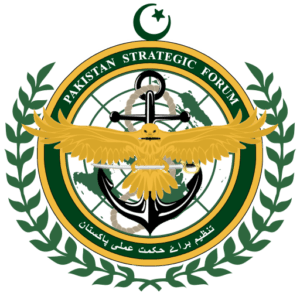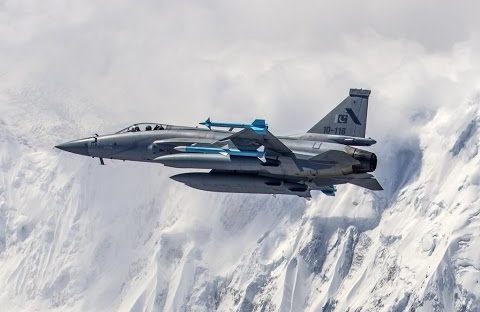Pakistan Airforce has always lived up to the expectations of the nation in the hour of need. It has stood up against the odds in the face of better trained and equipped adversaries since 1947. Its history is lightened with examples of tremendous bravery and sacrifice in the line of duty. PAF’S Eagle-eyed pilots wrote epic stories of valor on the enemy’s heart and its skies anywhere in the world. The remarkable role of PAF’s pilot in the Indo-Pak war of 1965 & 1971 will be a shining path for future cadres of officers as well as a sign of pride for generations.
During 1965 war PAF’s role can never be diminished. Although operation Gibraltar brought initial setbacks for military leadership, the PAF stood ready to impose a heavy cost on any belligerent enemy. The increased hostility of Indians across the LOC was a harbinger for PAF leadership to prepare their emergency response. Soon after the launch of the Army’s Operation Grand Slam along the LOC, PAF leadership became fully aware of the future possible direction. The air force chief, Air Marshall Nur Khan made necessary arrangements to help ground forces in an enemy encounter. According to former Air Commodore Sajjad Haider, the then Sqn.LDR, the PAF strategy was to hit the Indian Airforce bases at twilight so that IAF would not be able to retaliate as there were no fighter jets in their inventory that could carry out precision strikes on PAF bases at night. This strategy could help PAF in achieving air superiority against a numerically far superior enemy.
With full-blown war on the night of 6th September 1965, when Indian forces crossed the international border to capture Lahore. In response to Indian aggression, PAF jets were scrambled from Peshawar and Sargodha airbase to hit the Indian Army advancing towards Lahore. Two F-86 Sabres from Peshawar airbase, later joined by an F-104 starfighter from Sargodha, attacked the advancing Indian troops, inflicting heavy losses on the adversary thus, halting their further advance.
As per the PAF’s war strategy, three PAF bases (Sargodha, Peshawar, and Mauripur) were given the green signal to carry out air raids on the major IAF bases. No.19 Squadron, under the command of Squadron Leader Sajjad Haider, was given the task to hit the Indian Airforce base at Pathankot. After a detailed briefing, Sqn.LDR Sajjad Haider and his colleagues gathered to have final words before taking off. After analyzing the sensitivity of the mission, 8 F-86 Sabres of No.19 Squadron, under the command of Sqn.LDR Sajjad Haider, took off from the PAF base Peshawar to carry out the very first air raid across the border in the history of the Pakistan Airforce. The valiant sons who took part in this mission were Sqn.LDR Sajjad Haider, Flt/lt Dilawar Hussain, Flt/lt Mohammad Akbar, Flt/lt Ghani Akbar, Flt/lt Abbas Khattak, Flt/lt Mazhar Abbas, F/O Arshad Chaudhary, F/O Khalid Latif while The two escort pilots namely W/C MG Tawab and Flt/lt Arshad Sami were providing air cover to the strike formation. Pasrur was selected as a descent point by the squadron commander from where the strike formation turned their course to Pathankot. This was done to evade the enemy radars and aerial engagement with the scrambled IAF jets. Indian radar controller in Amritsar contacted the station commander of IAF base Pathankot and informed him about a possible air raid as he had detected the PAF aircraft before descending at Pasrur. Here, the station commander of IAF base Pathankot, W/C Suri made a historic mistake by ignoring the threat and not allowing IAF CAPs (Combat Air Patrols) to fly.
At 1705 hours, September 6, PAF strike formation reached Pathankot and caught Indians by surprise. No resistance was offered by the IAF during the strike formation position. At this moment, Squadron Leader Sajjad Haider opened fire on the parked IAF Mystere aircrafts on the Pathankot airfield. Later, followed by another massive attack from the other members of the strike formations. Meanwhile, F/O Arshad Chaudhary on turning back for the second strike saw 2 IAF Mig-21s getting refueled on the ground. He targeted the Indian Migs and turned them into ashes followed by a similar attack on the ATC (Air Traffic Control) building. During the attack, at least 13 IAF aircrafts (7 Mig-21, 5 Mystere, and 1 C119 transport aircraft) were destroyed before taking off. After accomplishing their assigned task, the PAF fighter jets returned safely to Peshawar Base. The PAF officers of the strike formation along with the 2 providing air cover were later awarded gallantry awards for their such act of valor.
The devastation on Pathankot airfield has a unique importance in the history of the Pakistan Airforce as this was the very first air raid across the international border. The successful attack not only boosted the morale of PAF’s leadership but also assist them in achieving air superiority against the better-equipped foe. The professionalism of PAF pilots showed that the true strength lies not only in numerical superiority but in the courage and valor of those sitting in cockpits. From the first show of power and capability till today PAF’s has maintained its credibility as a professional air force amongst elite trained air forces of the world.
Author: Syed Hani Hussain Zaidi
#TeamPakistanStrategicForum








“The professionalism of PAF pilots showed that the true strength lies not only in numerical superiority but in the courage and valor of those sitting in cockpits.”
Brilliantly potrayed the events with an excellent choice of words. Keep up writing brother.
Thanks brother😊 your appreciation really means a lot to me.
The heroic men of the Pakistan Air Force prove to the world the professionalism and greatness of the Pakistan Air Force and the incompetence of the Indian Air Force
https://thefoji.com/pakistan-air-force-vs-indian-air-force/